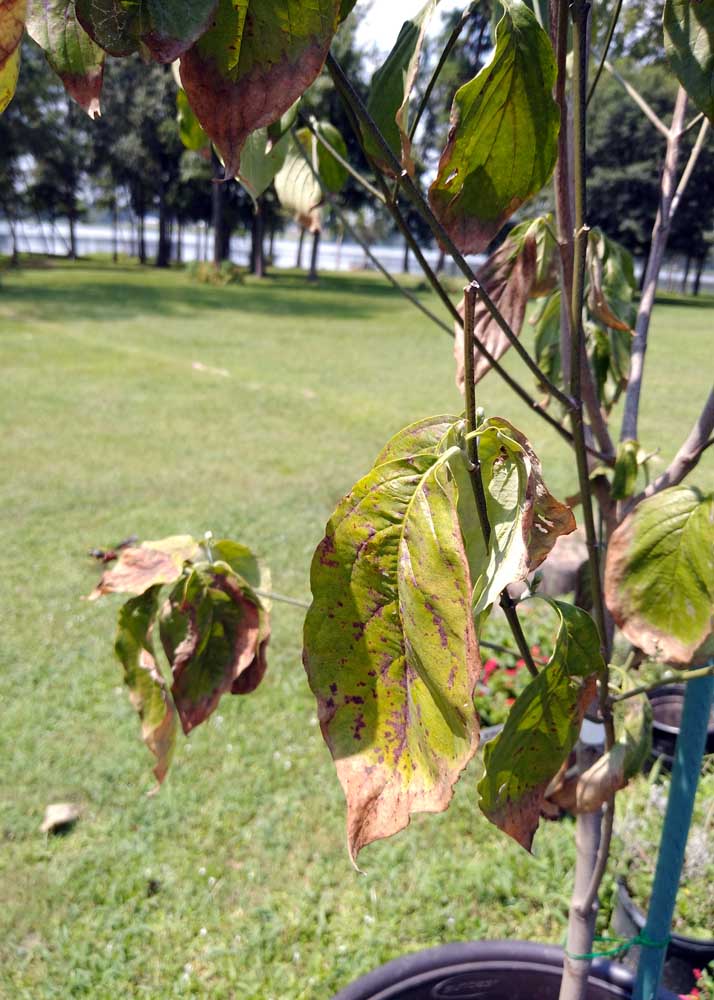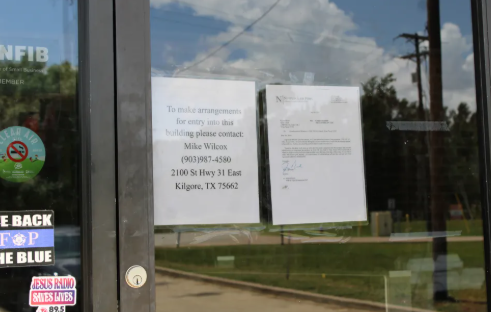Neil Sperry: Gardener’s Mailbag
Published 5:35 pm Tuesday, August 31, 2021

- Dogwood disease
Dear Neil: We have seven Chinese pistachio trees that have been in our landscape for five or six years. One of them seems to have been hurt badly by last February’s cold. It has less than 25 percent of its normal leaves. It has round bumps on its trunk, but nothing has happened this year. Should I take it out or wait until spring to see if it recovers?
Answer: If it’s in a location where it wouldn’t hurt anyone or anything should it come down over the winter, I’d leave it there to see if it rebounds. I really don’t think that it will, but it’s worth the small gamble. Goodness, from the photo of your other trees, your landscape and lawn are beautiful.
Trending
Dear Neil: What can I do about crabgrass in my raised vegetable garden? (Without using something not good for my vegetables.) I tried pulling it, but it has become stronger than I am. Would burning the ground like I remember my grandparents doing work?
Answer: Oh, don’t do that! And no. It wouldn’t help anyway. First, I doubt if you have true crabgrass. Crabgrass is an annual weed. It germinates in the spring, grows and completes its life cycle in one growing season. If that’s what you have it would be fully seeded by now and about to die, roots and all. Its seed heads look like helicopter rotors and the plants produce short runners 6 or 8 inches long. I suspect you may have Johnsongrass. It’s a much stronger, perennial weed that comes back from finger-sized roots. It can grow to be 3 to 5 feet tall if it’s not trimmed. If it were my garden, once I had finished harvesting (probably by now if the weeds are really bad), I definitely would spray with a glyphosate-only weedkiller. It would kill any grassy or broadleafed weed. Nutsedge would be the one notable exception. Glyphosates do not contaminate the soil. Your other option, if you preferred not to use the weedkiller, would be to solarize the space by covering it with black polyethylene plastic for the rest of this summer and fall. You might have to do so for the spring and summer next year as well, depending on what type of weed you have. I’d suggest you visit with a Texas Certified Nursery Professional at a local independent garden center to get it identified and to outline a course of action.
Dear Neil: Our two live oak trees in the front yard seem to be sending up sprouts. What is causing this, and what can we do to stop it?
Answer: I can’t see enough of the tree to know for sure, but I’d be willing to bet it suffered freeze damage in last February’s cold. If the top growth has thinned, and especially if any of the bark has loosened, that would confirm it. I don’t see that in the small amount of bark showing in the photo, however. A small percentage of live oaks will do this under normal circumstances, but it’s rare to see this magnitude of numbers of sprouts, especially if a tree has never put up any root sprouts before. Dig a few of them up carefully to see if they are tethered to the mother tree. If so, you won’t be able to use any kind of weedkiller to eliminate them because it would be carried back to the main tree. Your prime way of dealing with them will be to cut them off with the mower. If the tree tries to send up more of them, and if the top growth remains vigorous, you’re going to have to remove them manually with a sharpshooter spade. None of this, I know, is the answer you wanted to read.
Dear Neil: We purchased this tree at a reputable local nursery in March. By April the leaves at the top of the tree had become diseased by what I thought was powdery mildew. I used several different fungicides, but the problem has seemed to change into other funguses. What is it, and what can I do to stop it?
Answer: What I’m seeing in your photo is tip and edge burn of the leaves, and that is not a symptom of any type of disease. That’s moisture stress. The edges and tips are the points farthest from the roots, so they get the water last and run out of water first. It also looks like this tree never got planted. My old saying is that nothing good ever happens when we leave nursery stock in pots after we bring it home. All it takes is letting it get too dry one time for it to be hurt by the moisture stress. I see no call for use of any fungicide from what I see in the photo. I would get your dogwood planted as soon as you can and be very mindful of its need for water.
Trending
Dear Neil: My neighbor’s hackberry trees are infested with wooly aphids. I have tried spraying an organic solution on our side of the fence six times but it hasn’t helped. He has not given me permission to hire a professional to come onto his property to spray the tree. I created a COVID-safe place to gather in our backyard last year, but it is uninhabitable due to the wooly aphids and the mess they have created. What can I do?
Answer: I wish I had a better answer, but if the tree is on his property, it’s really up to the two of you to work out a way. Wooly hackberry and oak aphids are plant feeders that suck sap from the trees. Other than the nuisance and mess you described, they present no risk to you or your guests and really not much of one to your plants. A driving rain will help clean things up, as will the first freeze. (Texas A&M has a great deal of information on this insect online.)
(Have a question you’d like Neil to consider? Mail it to him in care of this newspaper or e-mail him at mailbag@sperrygardens.com. Neil regrets that he cannot reply to questions individually.)






